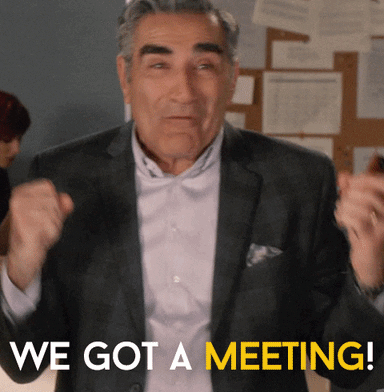
Have you cracked the code yet? We think we have, and would love to share it with you. Ready?
But before we let the secret out, let’s consider two very important things:
a) Don’t cram too many meetings into a single day, hoping that you will save time for your individual tasks/projects during the remainder of the work week. Back-to-back meetings will reduce your break time (whether for lunch/coffee/walks), lowering your energy levels and increasing fatigue. Research has shown that a healthy balance between meetings and individual work time will up your daily enthusiasm, creativity, and hence your overall productivity. Just find that sweet spot.
b) Complement high-pressure meetings with low-pressure individual work (and vice versa). Think about it. A combination of high-pressure meetings and individual tasks will only create more stress, which is something you can avoid by planning your day better.
Also Read: Unlock your full potential at work: Two proven productivity methods you must try TODAY!
Here are our top 10 tips for holding effective meetings:
If an e-mail can replace your meeting, you have your answer! Nobody likes to attend unnecessary meetings. And people are not fond of that person who invites for such meetings. Don’t be that person.
No concrete goal = Unsuccessful meeting. If you don’t know what you’re trying to accomplish through this meeting, what will you actually achieve by the end of it?
Don’t invite EVERYONE to your meetings. Get the right people to attend, including decision-makers, and your meeting has a better chance of being successful. Remember, the more people you invite, the lesser the productivity.
Anything longer than 45 minutes to an hour is pointless. You want people to be present in the moment, not thinking about which show they’re going to watch once they’re home. There’s a high probability of this happening if your discussion stretches beyond 60 minutes.
Scheduling a meeting close to the end of the day is never a good idea, since people will be getting ready to leave and would just want to get it over with, not giving you their complete attention. Again, meetings close to lunchtime (not a working lunch) are usually unsuccessful, as attendees might be hungry/thinking about food. Empty stomachs don’t beget the best ideas!

If you keep waiting for people who are usually late, you will start later than planned, and will obviously end later than scheduled too. How is this fair to the punctual ones? Start on time; it will teach latecomers a lesson.
You’re sitting at your desk all day. Why not stand during a meeting? If people are on their feet the entire time, they will probably get through the discussions quicker. As an added bonus, they might be less distracted by their phones/laptops.
If you want to discuss a report, why not send it a day or two before the meeting, so all the participants can study it? That way, you will be able to jump straight into discussing its key points, instead of having everyone read the report from scratch and waste time.
Whether someone’s suggestion is up to the mark or not, it’s crucial to acknowledge and appreciate sharing of ideas. Any kind of discouragement will dissuade others from speaking up during future discussions. Appreciating creativity is extremely important.
Whenever a group of people gets together, wavering of attention is normal. If you’re the host of the meeting, gently guide everyone back to the discussion. You won’t be able to reduce the meeting’s length if you give free rein to everyone.
Also Read: Growth vs. Fixed Mindset: Your path to professional triumph
And don’t forget to send out the minutes of the meeting. Sometimes, people attending the same meeting might interpret it differently. Meeting notes ensure that everyone is on the same page, and there is a record of what happened, action items, deadlines, responsibilities, and any other follow-ups.
How do YOU conduct your meetings? We would love to know! Drop us a comment.
Like what you read? Head to Life at BYJU’S to learn more about our work, people, and the stories that make us unique. To explore job opportunities, check out Careers at BYJU’S.
(This story has been put together by Storyweaver, Neha Dua)